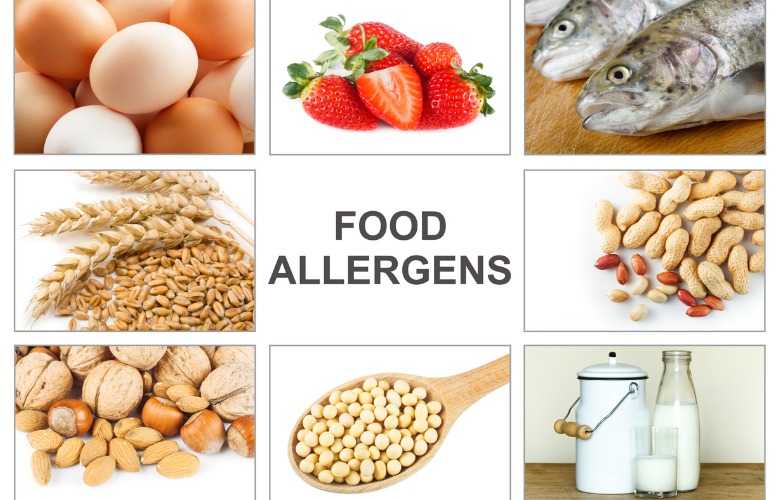Got allergies? Your microbiome could be responsible
Posted by Jemile Nesimi Hobson, B.A on Oct 11, 2024
In the last few decades, allergies, including skin conditions, respiratory and food allergies, sensitivities, and intolerances have become more prevalent. Factors including dietary and environmental causes are part of the reason why there has been an uptick in cases. However, it is more complicated than that. Allergies are essentially your immune system protecting itself – in turn, your body attacking itself to protect itself. Research is now indicating that the gut microbiome has a lot more to do with our immune systems and our immune response. Also, imbalances or dysbiosis in the gut can affect the microbiome present in our skin and lungs, playing a role in allergic diseases.
Allergic diseases
Allergic disease result from an interaction of an allergen between the allergen-specific IgE (on the surface of most mast cells and basophils. As a result – chemical mediators are released and an influx of inflammatory cells targets organs and allergy symptoms arise. Often these allergies start in childhood.
Allergic diseases include:
- Asthma
- Hay fever (allergic rhinitis)
- Food allergy
- Medication allergy
- Latex allergy
- Primary immunodeficiency
- Chronic sinusitis
- Sting insect allergy
- Eosinophil-associated diseases.
What is Gut Microbiome?
First of all, let’s break down exactly what the microbiome is. The gut microbiome consists of trillions of microorganisms, along with their genetic material. These microorganisms live in our intestinal tract and are responsible for helping to absorb and synthesize nutrients and play an important role in how we digest the food we eat. Also, these gut microbiota play roles in many other functions of the body, including metabolism, immune regulation, cognitive function, and mood.
Everyone has a fingerprint unique to themselves and everyone has a gut microbiome that is a bacterial fingerprint. Scientists are still researching what a healthy gut microbiome is, but they have become aware that it is a safety net of sorts. When we have a healthy gut, it keeps things that don’t belong in the bloodstream out, such as undigested food particles, toxins, and microbiota. A healthy gut also helps to fight off infection.
What scientists do know is the diversity of bacteria in the gut is good. This allows different types of good bacteria that can help to fight off bad bacteria:
Good bacteria – also known as beneficial bacteria, is any bacteria that enhance overall health. Probiotics are an example of good bacteria
Bad bacteria – are harmful to our body and usually cause us to be sick. Some bad bacteria can spoil your food or create an unhygienic environment.
However, as with many health functions, balance is key, having about 85% good bacteria and 15% bad bacteria is a good balance for our gut microbiome. Bacteria are needed to break down carbohydrates or sugars, toxins, and help our body absorb fatty acids so our cells can grow.
What is Dysbiosis?
When the gut microbiome is imbalanced, it is called dysbiosis. Dysbiosis can be caused by many factors including overusing antibiotics, eating a nutritionally poor diet, being overweight, stress, and illness. Eating a diet full of processed foods, lots of sweeteners both refined and artificial sugars can compromise our gut linings. Remember when we mentioned that the microbiome acts as a wall in our gut? If that wall is compromised it can cause “Leaky Gut”, which causes the gut barrier to allow gut microbes and undigested food particles to enter our bloodstream. This can cause our immune system to be triggered and increase the risk of disease.
Symptoms of Dysbiosis
- Anxiety, depression, mood swings
- Memory issues and spaced-out feeling
- Insomnia or sleep issues
- Skin rash, eczema, psoriasis
- Muscle and joint pain
- Candida
- Diarrhea, gas, bloating, and constipation
- Bad breath and body odor
- Heartburn
- Itching
- Frequent urination
- Frequent colds
- Fatigue

Microbiomes in infancy and early childhood
Research has shown that food allergies can begin early on and are affected by gut microbes in infants. They found that gut microbes or intestinal bacteria of healthy infants could help regulate allergic responses to food – in this study, it was cow’s milk. The study was done with healthy infant intestinal bacteria and germ-free mice, but it was discovered that the gut microbiome can protect us from food allergies by creating dietary antigens in our bodies as babies. The high occurrence of Cesarean birth and formula feeding, along with prenatal diet and antibiotics can disrupt the microbiome balance in infants' guts.
The composition of the gut microbiome includes an intricate ecosystem of eukaryotic fungi, viruses, archaea, and bacteria. This composition is formed during a child’s early years, the first three to be exact. During childbirth, infants born via cesarean section have been found to have lower levels of the gut microbiome – particularly, Escherichia coli, Bifidobacterium, and Bacteroides species compared to babies born vaginally. Transfer of maternal vaginal microbes did not occur.
Furthermore, other studies have indicated that during the first three years of life, are at higher risk of autoimmune and allergic diseases including food allergies based on the intestinal bacteria in their gut. The study also showed that children with higher proportions of Bifidobacterium had a lower risk. Those with a higher proportion of Bacteroides had a higher risk.
Diet and environmental factors can cause dysbiosis or an imbalance in the gut, skin, or lung microbiome. Infections and nutrition in childhood can change the diversity of these microbes – therefore causing the immune response to either to become inflamed and allergic disease is the result or become tolerant and prevents the start of allergic disease or reaction.

The difference between allergens and intolerances and sensitivities
Allergies – are caused by allergens that can cause symptoms like – sneezing, nasal congestion, watery eyes, hives, stomach pain, nausea, diarrhea, and swelling. The body can also enter anaphylactic shock – which requires immediate medical attention. Caused by the immune system's reaction against an “invader” and the immune cells fight harmless substances as if they are dangerous viruses or bacteria. These immune cells produce IgE antibodies that bind to allergens and then release histamine which causes the symptoms.
Intolerance –food intolerance is when the body cannot digest foods such as lactose, alcohol, or gluten, and the body experiences symptoms such as constipation, bloating, cramps, and diarrhea. This also includes those who suffer from Celiac disease which is an autoimmune inflammation that is triggered by gluten and affects the small intestine.
Sensitivities are usually mild reactions similar to intolerances and are often triggered by grains like wheat and barley.

Gut healing
There are a few ways you can help to alleviate seasonal allergies and digestive issues due to allergens, intolerances, and food sensitivities, and other triggers.
A combination of prebiotics and probiotics
Probiotics are taken orally and are live beneficial bacteria. Prebiotics are substances that feed gut bacteria. Together they are known as synbiotics.
Early intervention
Whether a child or infant is predisposed to a cow milk allergy or already has an allergy – synbiotics can be effective for healing their gut and lessening symptoms and reactions.
Eat a diet that is balanced with whole foods
Whole grains, beans, legumes, vegetables, fruit, nuts, and seeds all are healing to the gut microbiome.
Wheat allergy
Research shows that Lactobacillus and Clostridium leptum, both beneficial bacteria, can help to protect against wheat allergy
Exercise regularly
Exercise has been linked to gut microbial diversity which seems like an easy way to keep allergies at bay and your immune system running well. It has also been linked to helping with asthma.
Add fermented foods to your diet
These involve yeasts or bacteria that convert the sugars to organic acids or alcohols – many of these foods are rich in lactobacilli and have fewer Enterobacteriaceae (bacteria associated with inflammation and chronic disease):
- Yogurt
- Sauerkraut
- Kombucha
- Tempeh
- Kefir
- Kimchi.
Eat foods rich in polyphenols
These are plant compounds that can be digested by gut bacteria. In particular, polyphenols in cocoa increase Bifidobacteria and lactobacilli while decreasing clostridia. Sources include:
- Cocoa
- Dark chocolate
- Red wine
- Green tea
- Onions
- Blueberries
- Broccoli
- Almonds
- Grape skins
- Sleep.
Immune supporting supplements
A blend of quercetin, bromelain, zinc, and vitamin C along with vitamin D has been shown to help alleviate allergy symptoms and is considered a natural “antihistamine” solution. Fish oil has also been shown to help with the inflammation caused by asthma and turmeric or curcumin helps with inflammation associated with allergies.











